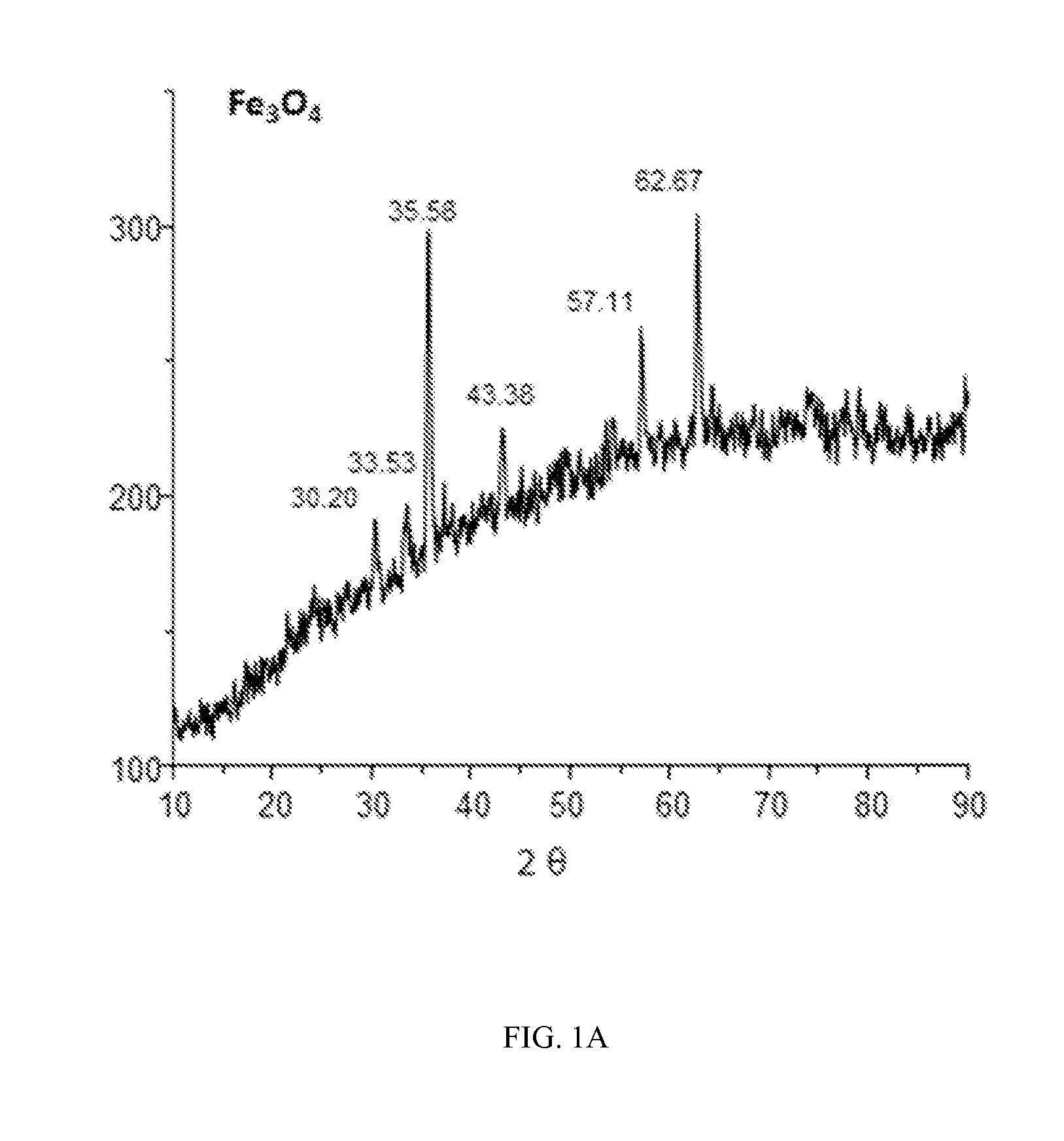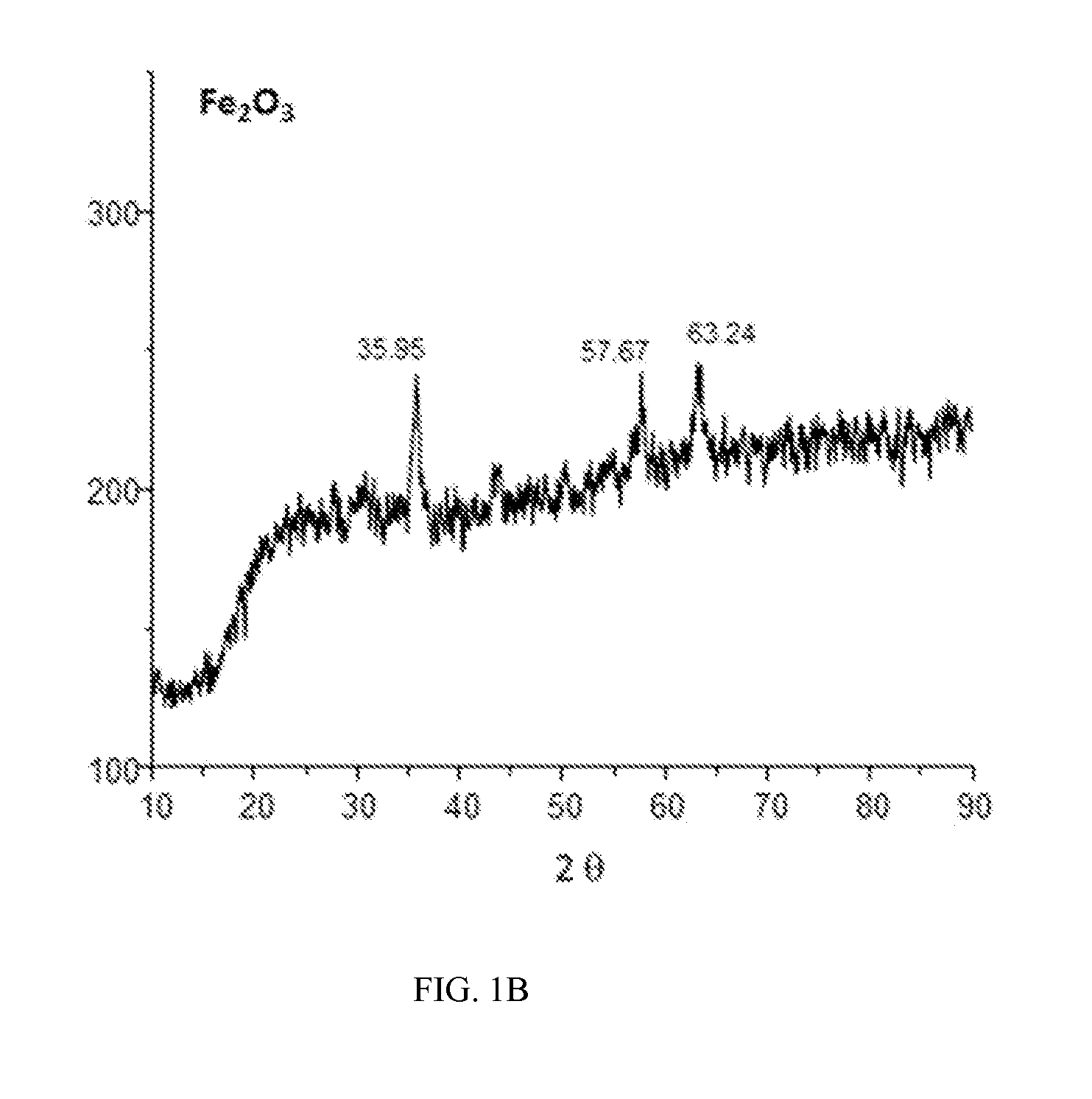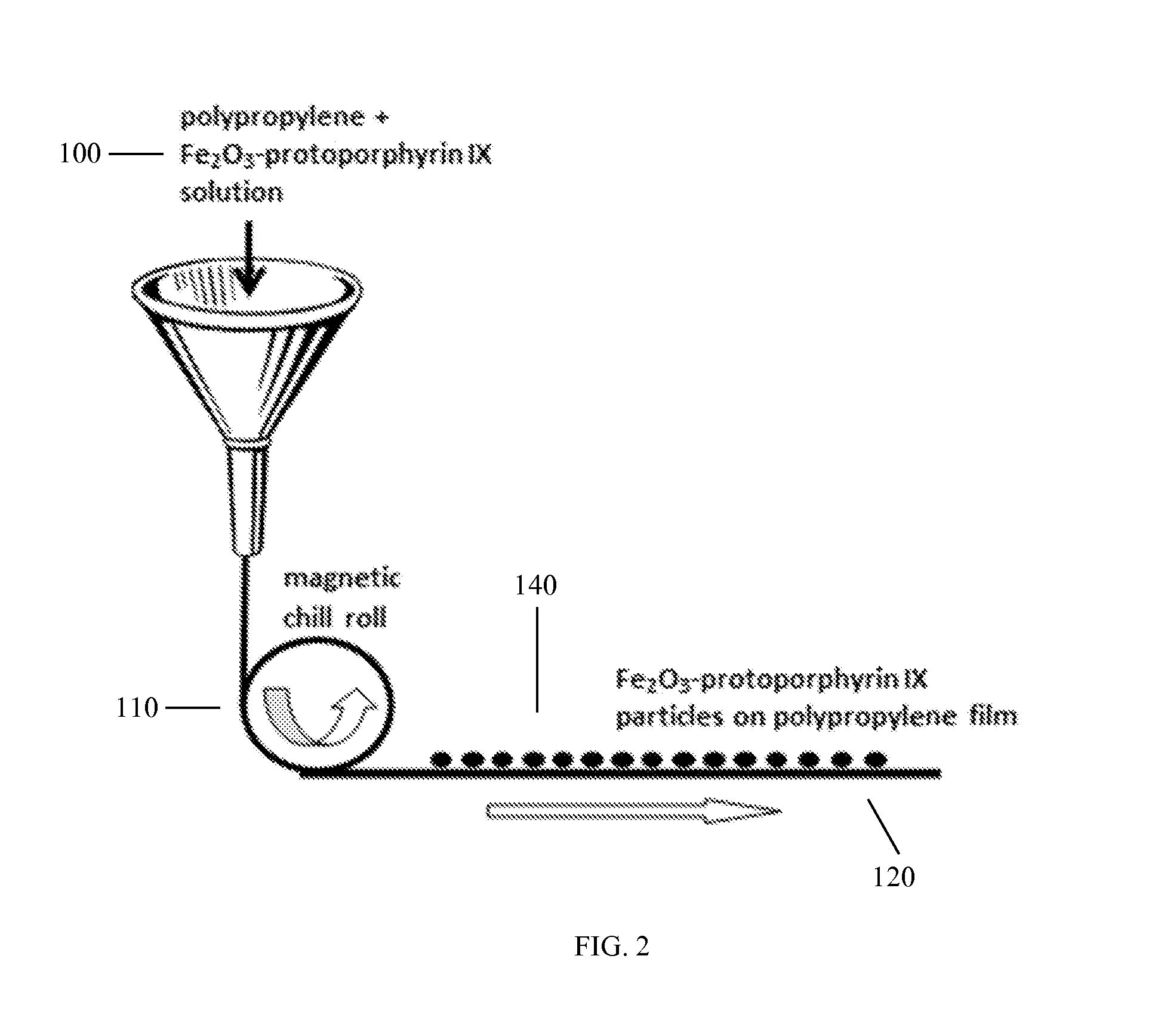Recyclable and reusable oxygen scavenger
a reusable, oxygen-scavenger technology, applied in the direction of hydrogen, packaging goods, containers preventing decay, etc., can solve the problems of food decay, major economic problem, odor, and sometimes formation of harmful compounds, and achieve the effect of low cos
- Summary
- Abstract
- Description
- Claims
- Application Information
AI Technical Summary
Benefits of technology
Problems solved by technology
Method used
Image
Examples
example 1
Preparation of Protoporphyrin IX-Fe2O3 Microspheres
[0027]About 10 milligrams of ferric oxide having particles with an average size of about 100 nanometers to about 500 nanometers was dispersed in 30 ml of 3-mercaptopropionic acid in the ratio of 1:3 wt / vol and mixed using an overhead stirrer for about 30 minutes. A solution containing 50 mM of ethylenediamine carbodiimide, 50 mM of N-hydroxysuccinimide (NHS) and 50 mM of 2-(N-morpholino) ethanesulfonic (MES) acid was added to the above ferric oxide solution, and the mixing was continued for about 10 minutes. About 2 milligrams of protoporphyrin IX dissolved in 3 ml of methanol was added to the above mixture and the mixing was continued for another 2 hours. The resulting protoporphyrin IX-Fe2O3 particles were separated using a magnetic field of about 0.1 Tesla and washed with water.
example 2
Preparation of Protoporphyrin IX-Copper Oxide
[0028]About 10 milligrams of copper oxide is dispersed in 30 ml of 3-mercaptopropionic acid in the ratio of 1:3 wt / vol and mixed using an overhead stirrer for about 30 minutes. A solution containing 50 mM of ethylenediamine carbodiimide, 50 mM of N-hydroxysuccinimide (NHS) and 50 mM of 2-(N-morpholino) ethanesulfonic (MES) acid is added to the above copper oxide solution, and the mixing is continued for about 10 minutes. About 2 milligrams of protoporphyrin IX dissolved in 3 ml of methanol is added to the above mixture and the mixing is continued for another 2 hours. The resulting protoporphyrin IX-copper oxide particles are separated by filtration and washed with water.
example 3
Preparation of Polypropylene Film Having Protoporphyrin IX-Fe2O3 Particles on its Surface
[0029]A polymer solution was formed by dissolving about 3 grams of polypropylene in 50 ml of acetone. About 3 milligrams of the protoporphyrin IX-Fe2O3 particles from Example 1 was added to the polymer solution and stirred for about 15 minutes at 1500 RPM to form a molding mixture. The molding mixture was molded into a film using a magnetic chill roller 110 as shown in FIG. 2. Referring to FIG. 2, the molding mixture 100 was fed into the magnetic chill roller 110, which formed the molding mixture 100 into a flat film 120 having the protoporphyrin IX-Fe2O3 particles 140 on a surface of the film 120.
PUM
| Property | Measurement | Unit |
|---|---|---|
| diameter | aaaaa | aaaaa |
| fixed wavelength | aaaaa | aaaaa |
| area | aaaaa | aaaaa |
Abstract
Description
Claims
Application Information
 Login to view more
Login to view more - R&D Engineer
- R&D Manager
- IP Professional
- Industry Leading Data Capabilities
- Powerful AI technology
- Patent DNA Extraction
Browse by: Latest US Patents, China's latest patents, Technical Efficacy Thesaurus, Application Domain, Technology Topic.
© 2024 PatSnap. All rights reserved.Legal|Privacy policy|Modern Slavery Act Transparency Statement|Sitemap



